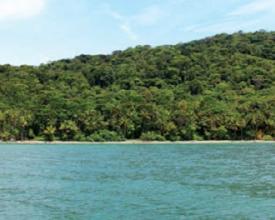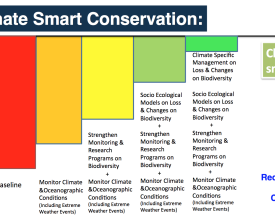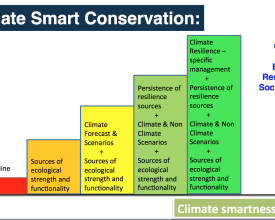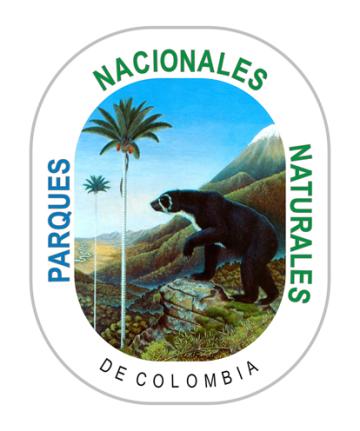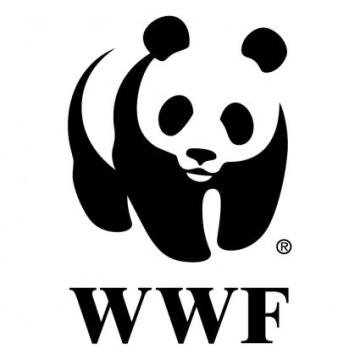
Climate Smart Conservation for Marine Protected Areas
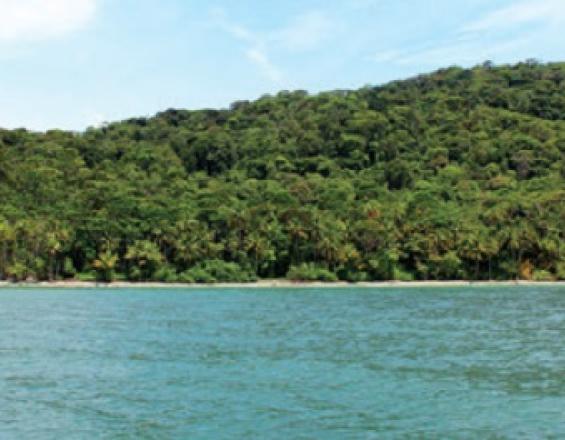
Climate Change Adaptation Framework for Marine Protected Areas addresses the need for developing a framework methodology integrating technical actions to assess climate risks and resilience of the protected area’s conservation targets, prioritization of climate adaptation actions, implementation of priority actions to increase resilience and adaptation capacity; and integrating adaptation measures with the park’s existing planning tools in Gorgona National Park, Colombia for local stakeholders.
Context
Challenges addressed
the ecosystem´s vulnerability to climate change, lack of conservation activities It provides a framework that allows protected area managers in Colombia to mainstream the necessary actions to increase the resilience of coastal & marine ecosystems within the existing planning framework, strengthening the protected areas capacity to provide environmental goods & services, and to benefit conservation objectives and communities in the face of existing & future climate conditions.
Location
Process
Summary of the process
The building blocks interact in the development of a conceptual framework that enables climate smart conservation in protected areas: 1. It provides practical and scientifically sound guidance to facilitate climate adaptation planning; 2. Based on an understanding of climate risks and climate resilience that determine vulnerability, it then facilitates decision-making about the most appropriate adaptation measures.
Building Blocks
Conservation targets
Enabling factors
Lesson learned
Vulnerability Assessment
Enabling factors
Lesson learned
Formulation of adaptation actions
Enabling factors
Lesson learned
Implementation of prioritized climate adaptation actions
Enabling factors
Lesson learned
Impacts
• Ecological: Gorgona NP aims to maintain ecological integrity of its conservation targets, particularly coral reefs and the pelagic ecosystem. To that end, the PA periodically (every 4-5 years) assesses ecological integrity of its conservation targets and monitors climate adaptation benefits. • Social: It allows the local fisheries to coordinate their activities to protect a common resource. It also increases information and knowledge about the benefits of the PA. • Economic: An increase in fish stocks is expected. Monitoring is carried on at this time to report accurate results.
Beneficiaries
protected area authorities, coastal fishing communities, local fishing communities, local & regional environmental and planning authorities, protected area managers, regional environment committees, local NGOs, universities and researchers
Story
Gorgona National Park is one of the most representative protected areas in Colombia. Because of its rich biodiversity and the large amount of research carried out on its terrestrial, coastal and marine ecosystems, it is known as the “Science Island”. Although there are no local communities living on the island, local communities are highly dependent on the resources provided by the so-called “Gorgona-Sanquianga region” (Sanquianga is another National Park, and it protects the most important mangrove ecosystem on the south-west coast of Colombia).
Aware of its responsibility and the park’s importance, Gorgona National Park administration has updated its Management Plan for the period 2015-2019, taking into account a regional context beyond its own geographical limits, and including for the first time an ecosystem services approach and climate change considerations. These climate change considerations are not only part of an analysis to set better conservation measures on conservation objects, ecosystems and species, but to maintain key resources for the communities that base their livelihoods on the legal activities outside the Park, such as fishing.
The process of capacity building has included the Park staff, local stakeholders, WWF technical team support and other actor’s inputs and recommendations. Parks and WWF Colombia acquired new skills and technical capacity through this first experience. To keep pace with other conservation organizations and to advise other protected areas, there is still a need to develop better skills and strengthen and expand climate Smart conservation teams. In the short term, this can be through staff training on climate adaptation, biodiversity and climate science, and GIS tools and modeling techniques.
At the end, Climate change adaptation measures and vulnerability assessments in Gorgona has been a team effort including different levels of knowledge, capacities and interest, but most of all, it shows the responsibility and will of Gorgona and WWF to preserve the most valuable resources of the Pacific in Colombia.
